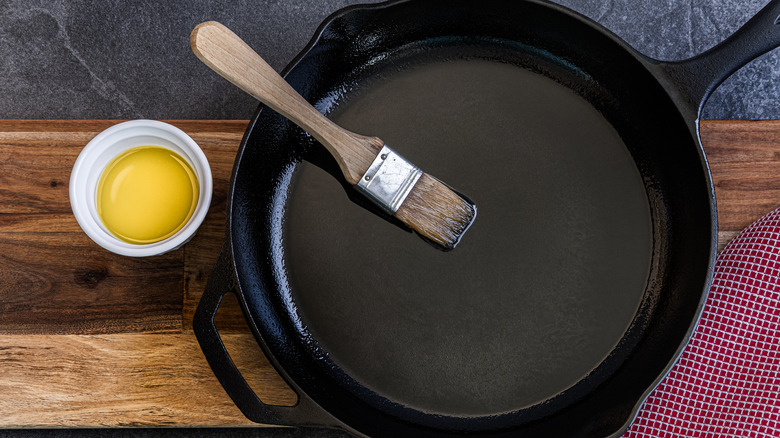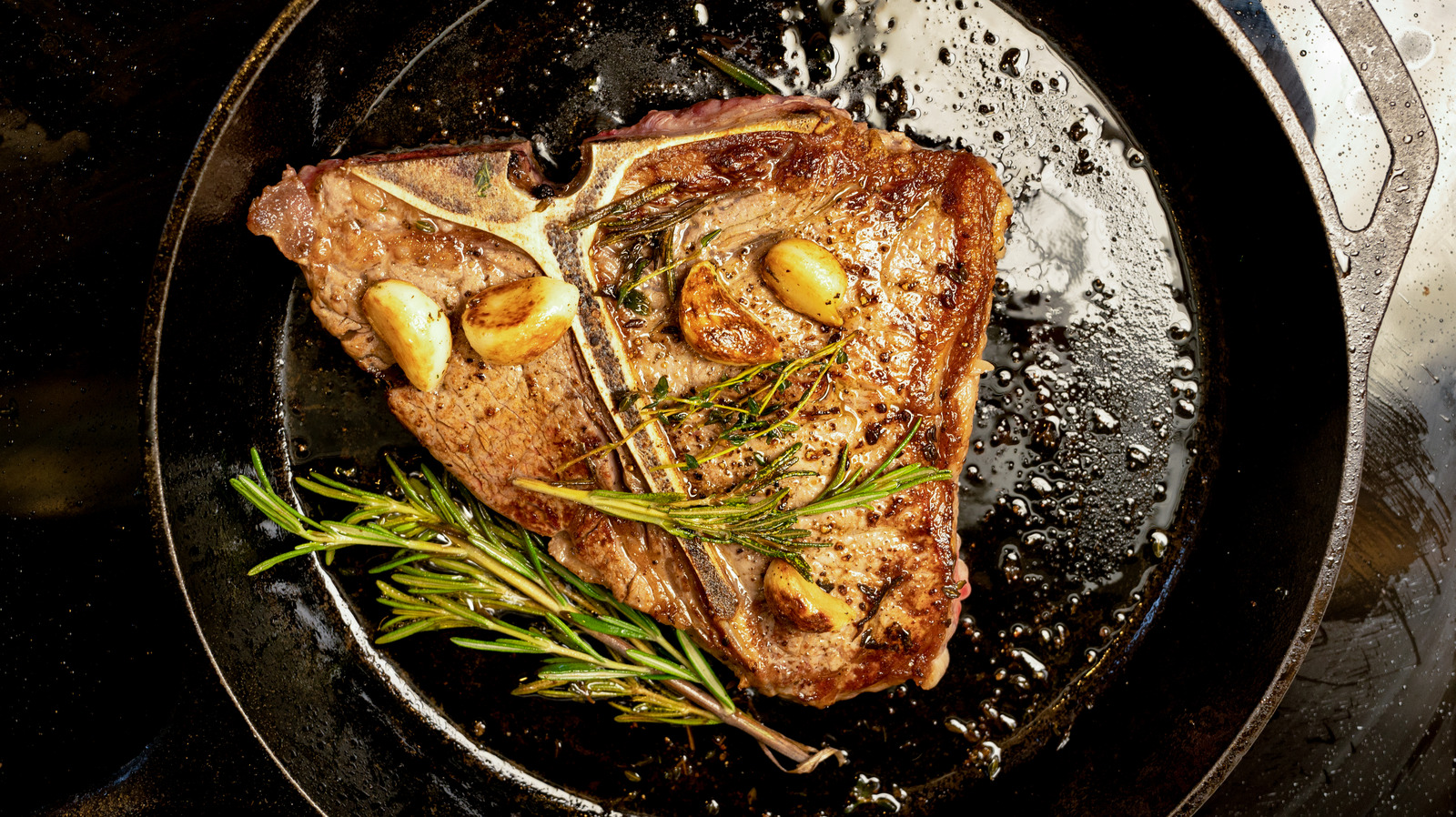Due to the amount of seasoning it acquires through the years, an older cast iron pan is regarded as more valuable by home chefs in comparison to one straight from the box. A well-seasoned cast iron pan may conjure up images of rubbing ground pepper and salt into the pan as the decades go by, but it’s actually much different than that. Think of the seasoning process as a long-term science project — the more cooking experience the pan has, the better it becomes. This is thanks to the polymerization process.
While you can’t see it with the physical eye, a cast iron pan comes with a rough, textured surface that causes food to stick to it easily. As more oils come into contact with the pan, it starts to develop a polished, nonstick surface that allows food to slide out of it like a dream. After washing and drying the pan, the seasoning process begins by buffing a thin layer of oil into the surface. Afterwards, it’s baked in the oven.
As the oil heats, it triggers polymerization, in which the molecules in the oil solidify and bind together to the cast iron skillet, creating a solid surface. The first seasoning endeavor may produce an uneven layer, but with time, the pan will become smoother as the layers continue to build up. Aside from creating the perfect nonstick surface, seasoning also serves to protect the iron from oxygen, which causes rusting.
How often does your cast iron need to be seasoned?

Although most modern cast iron brands pre-season their products, it doesn’t hurt to maintain it on your own every now and then. After cooking, wash and dry the skillet and wipe some oil onto the surface to keep it protected and slick. As for running through the whole seasoning routine, that should be done only a handful of times during the year. To decrease the amount of times your skillet needs to be seasoned, avoid things that will erode the layers, such as using abrasive products to clean it, cooking with tons of acidic ingredients, and soaking it in water.
When you do season it, choose oils that are neutral in taste. If you wipe down your skillet with oil after each use, you’ll want to spring for something that you don’t mind using often and won’t leave a strong flavor on the surface that may affect whatever you’re cooking. Since the skillet will be heated to at least 450 degrees Fahrenheit, the oil will also need to have a high smoke point. The best oils to season your cast iron with are rich in omega-3 fatty acids, such as soybean, flaxseed, grapeseed, and canola. They tend to work better when creating iron-clad polymers for your skillet, creating a perfectly smooth surface.







